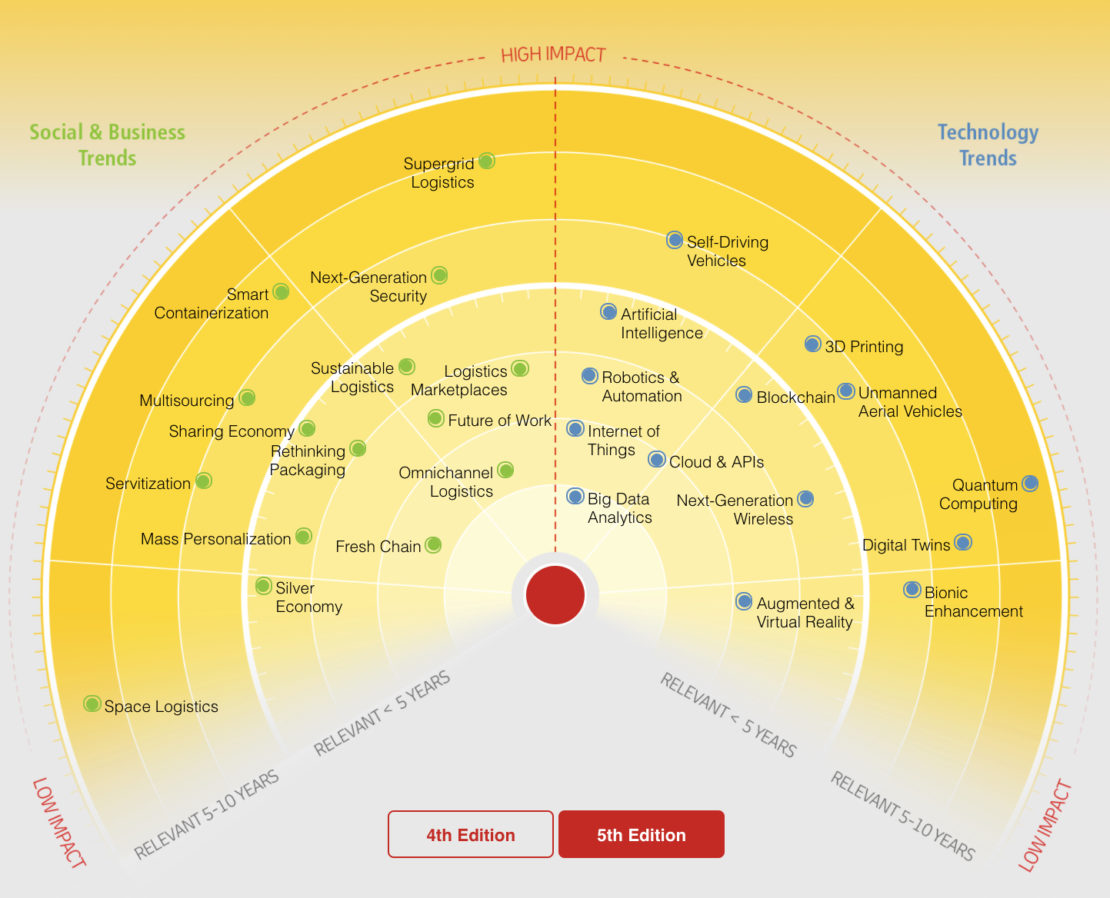AI Is Transforming the Logistics Landscape: Here’s a Glimpse at How, Why and By When

As the COVID-19 pandemic continues to put pressure on supply chains worldwide, the prospect of leveraging AI logistics tech has become more attractive than ever. Data-driven solutions are giving companies the power to increase profitability, resiliency and meet the new demands of commerce in times of unpredictability. AI and machine learning (ML) technologies are now being widely applied across distribution networks. In fact, 61% of executives report decreased costs and 53% report increased revenues as a direct benefit of introducing AI into their supply chains.
Clearly, AI tech is becoming a crucial cog in the logistics machine. And here’s why.
AI in logistics: the lowdown
First things first, AI and ML are not the same. AI means a machine can simulate human thinking capability, whereas ML is a form of pattern recognition by machines or computers. Yet, both have a key part to play in transforming the logistics and intralogistics landscapes. By combining the two to analyze vast quantities of data, these technologies have the power to improve the speed and accuracy of fulfillment and distribution networks, as well as the potential to reduce operating costs and the capacity for human error by increasing automation.
These benefits make it easy to see why AI and ML implementations are already being used by the industry to optimize warehouse operations and supply chain networks around the globe (more on this below).
So, how does AI work its magic?
The success of AI and ML-tech relies inextricably on data. Both require vast quantities of high-quality data and the processing power to efficiently analyze all the data that is collected. This ensures the insights gained are accurate and, therefore, valuable.Leading shipping firms, for example, have leveraged key data to forecast demand more successfully and optimize their routes. Those surveyed saw inventories trimmed by up to 75%, warehousing costs cut by 15 to 30% percent, and administrative costs reduced by 80%.
Logistics AI-tech in practice
Across industries worldwide, AI is being tapped as the solution to some of the biggest challenges that companies are facing. So let’s try and align the macro with the micro to get a better sense of the extent that this is more than just a tech-based hype and if we on the road to not only stellar but also standardized solutions. After all, the logistics industry already boasts multiple successful use cases:
Smart Warehouses and Warehouse Management Systems (WMS) — A prime example of advanced data systems in action. Using software, sensors, cameras, and other wireless communications to gather and process data, WMSs provide real-time reports and a complete overview of the supply chain, allowing business owners to make informed decisions and implement more automation. By analyzing ordering behavior in-depth, for example, forecasting processes can be streamlined and improved, enabling faster shipping times.
Trend Recognition – This technically falls under ML-tech, and enables companies to pinpoint patterns (and ultimately successes) in their supply chain data by using algorithms that are constantly learning and evolving. This gives logistics firms a significant advantage, and when combined with AI-tech, can be used to help predict seasonalities and demand, set prices, and optimize routes for last-mile delivery. However, a key limitation here is that using past data often means its value expires quickly – especially in times of erratic market developments, whether that’s volatile demand shifts or peaking freight costs.
Cognitive Logistics — trend recognition on steroids, bringing together data silos to make better strategic decisions based on automated understandings of interdependencies, is the frontier that cognitive logistics is looking to enter. Flexible logistics processes are now crucial in order to maintain high SLAs and customer satisfaction — and cognitive supply chains have the answer. These are highly digitalized supply chains that rely on AI and big data — enabling companies to forecast demand, plan efficiently, and react quickly to market changes with a 360-degree supply-chain view. In practice, this means cargo, warehouses, vehicles, etc. can all operate together as one cohesive network, ‘sensing’ the need for real-time adaptation.
Logistics-AI startups to look out for
Injecting AI into existing structures and processes retroactively surely helps to understand its potential to amplify and optimize. However, in order to get a better sense of AI’s power to innovate and transform, here are some examples of AI-first solutions:
Germany-based TNX is doing big things with big data and AI, offering an autonomous procurement platform built specifically for road transport. Using data and behavioral science, the TNX platform promises companies lower freight rates thanks to smart tendering, bundling, and price prediction.
Fizyr, in the Netherlands, is another exciting AI-powered startup offering software for automated picking in difficult environments, such as depalletizing or parcel handling. The company designs builds, installs, and maintains algorithms which agnostically enable grippers to handle unknown objects of different shapes, size, color, and material automatically.
Finally, Bulgaria’s Transmetrics uses AI, data-mining, and predictive analytics to help logistics providers optimize their services by pooling trailers to improve fleet utilization. The startup’s solution is one of several in this space that will help trucking companies in particular to optimize their costs as well as their carbon footprint.
So, what’s next?
Considering DHL’s tech radar, we can put the maturity of AI into context against all the complementary tech trends in logistics. Other than the tech maturity timeline of around five years, the tech radar suggests the high impact potential of AI. One of the reasons for this is the vast swathe of applicability, which extends well beyond supply chains and smart warehouses into quality control, predictive maintainance and driverless vehicles among others. In the absence of beaming, AI will serve as the increasingly indispensable well of knowledge-processing that will help companies approach the optimum logistical equilibrium: just enough supply of just the right product to get to just the right place, just in time.

